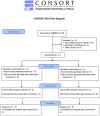Hypermobility of joints in dancers
- PMID: 30794600
- PMCID: PMC6386248
- DOI: 10.1371/journal.pone.0212188
Hypermobility of joints in dancers
Abstract
Objectives: The current understanding of hypermobility and its diagnostic criteria is still insufficient to create a complete and systematic clinical presentation of the disorder. The objective of this study was to assess the prevalence of joint hypermobility syndrome (JHS) amongst a cohort of jazz dancers, by analyzing its presence in accordance with a number of diagnostic criteria, and to verify potential risk factors for joint hypermobility in jazz dancers.
Methods: 77 jazz dancers from the Polish Dance Theater were examined (58 female and 19 male). The prevalence of JHS was assessed using the following diagnostic tools: a structured interview, Beighton score, Grahame & Hakim questionnaire, and Sachse's criteria, in the modified version proposed by Kapandji.
Results: The prevalence of JHS in this cohort of jazz dancers differed significantly, depending on which criteria were adopted (p = 0.001) with Beighton score, Grahame & Hakim questionnaire, and Sachse's criteria identifying 64.9%, 74% and 59.7% of the sample as JHS respectively. Hypermobility was significantly more prevalent in women than men (p < 0.05).
Conclusions: This study demonstrated a significant prevalence of joint hypermobility in jazz dancers and corroborates the findings of other researchers, indicating the need for unified diagnostic criteria for JHS in dancers.
Conflict of interest statement
The authors have declared that no competing interests exist.
Figures






Similar articles
-
The prevalence of generalized and syndromic hypermobility in elite Australian dancers.Phys Ther Sport. 2018 Jul;32:15-21. doi: 10.1016/j.ptsp.2018.02.001. Epub 2018 Mar 2. Phys Ther Sport. 2018. PMID: 29655088
-
Hypermobility and joint hypermobility syndrome in Brazilian students and teachers of ballet dance.Rheumatol Int. 2015 Apr;35(4):741-7. doi: 10.1007/s00296-014-3127-7. Epub 2014 Sep 14. Rheumatol Int. 2015. PMID: 25218649
-
Prevalence and predictors of adolescent idiopathic scoliosis in adolescent ballet dancers.Arch Phys Med Rehabil. 2014 Sep;95(9):1725-30. doi: 10.1016/j.apmr.2014.02.027. Epub 2014 Mar 21. Arch Phys Med Rehabil. 2014. PMID: 24662812 Clinical Trial.
-
Hypermobility and dance: a review.Int J Sports Med. 2011 Jul;32(7):485-9. doi: 10.1055/s-0031-1273690. Epub 2011 Jun 21. Int J Sports Med. 2011. PMID: 21695667 Review.
-
Hypermobility and the hypermobility syndrome.Man Ther. 2007 Nov;12(4):298-309. doi: 10.1016/j.math.2007.05.001. Epub 2007 Jul 20. Man Ther. 2007. PMID: 17643337 Review.
Cited by
-
On the track of the ideal turnout: Electromyographic and kinematic analysis of the five classical ballet positions.PLoS One. 2020 Mar 25;15(3):e0230654. doi: 10.1371/journal.pone.0230654. eCollection 2020. PLoS One. 2020. PMID: 32210478 Free PMC article.
-
Risk of Injury in Physically Active Students: Associated Factors and Quality of Life Aspects.Int J Environ Res Public Health. 2020 Apr 8;17(7):2564. doi: 10.3390/ijerph17072564. Int J Environ Res Public Health. 2020. PMID: 32276511 Free PMC article.
-
Prevalence of MTHFR Polymorphisms in Patients With Hypermobile Ehlers-Danlos Syndrome and Hypermobile Spectrum Disorders in a US Hypermobility Clinic.ACR Open Rheumatol. 2024 Jul;6(7):399-402. doi: 10.1002/acr2.11667. Epub 2024 Mar 24. ACR Open Rheumatol. 2024. PMID: 38523329 Free PMC article.
-
A Physiotherapeutic Approach to Musicians' Health - Data From 614 Patients From a Physiotherapy Clinic for Musicians (INAP/O).Front Psychol. 2021 Jun 10;12:568684. doi: 10.3389/fpsyg.2021.568684. eCollection 2021. Front Psychol. 2021. PMID: 34177677 Free PMC article.
-
Hypermobility spectrum disorders: A review.Rheumatol Immunol Res. 2023 Jul 22;4(2):60-68. doi: 10.2478/rir-2023-0010. eCollection 2023 Jun. Rheumatol Immunol Res. 2023. PMID: 37637226 Free PMC article.
References
-
- Drężewska M, Gałuszka R, Śliwiński Z. Hip joints mobility in dancers. Prelimary report. Ortop Traumatol Rehab 2012; 14(5):443–452. - PubMed
Publication types
MeSH terms
LinkOut - more resources
Full Text Sources
Miscellaneous

